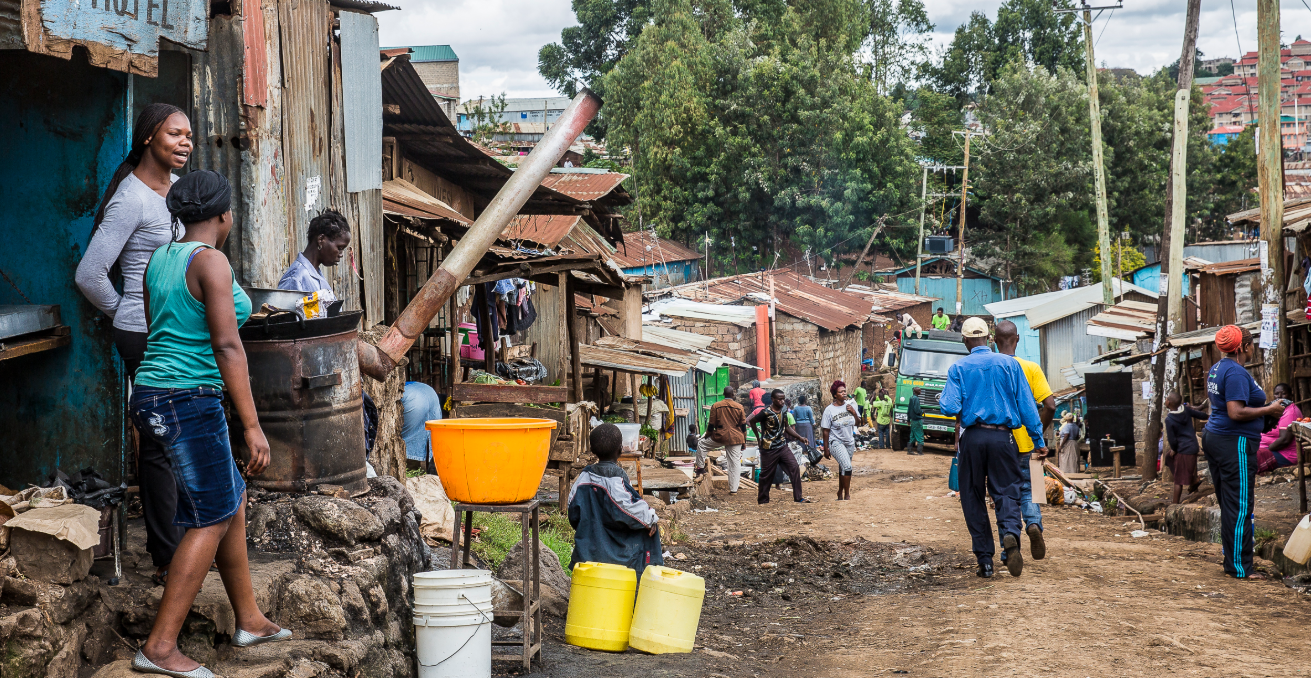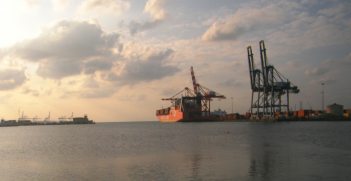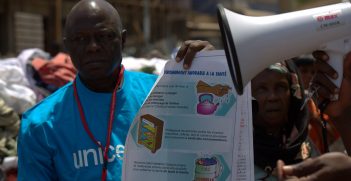Kenya’s Killing and Raping Game and the Despots Who Run It

Politics in Kenya is dominated by rapacious elites consumed with looting state resources and using violence to avoid any possible accountability. Elections serve as key points of entry and consolidation in this system, and are manifestations of corruption, fraud, and repression.
When so much flows from winning elections, the costs, financial and otherwise, are extremely high. The ruling elite protects its position in part by extending the spoils system to all MPs. The 500 or so parliamentarians (National Assembly and Senate) are among the highest paid in the world, enjoying a monthly salary in 2013 of about $10,000, plus generous perks and benefits.
In Kenya, as in many other African countries, power is highly centralised in the presidency, facilitating the execution of violence. President Uhuru Kenyatta and his deputy, William Ruto, were indicted by the International Criminal Court for crimes against humanity, for organising and supporting the violence that occurred during elections in 2007-2008. The case collapsed as witnesses absconded or died. Impunity, according to Human Rights Watch (HRW), lies “at the heart” of Kenya’s governance. Impunity for politicians was a “national tradition”: politicians who have been publicly named for fomenting political violence through the 1990s and in 2002 continued in parliament in 2007-2008.
While the ruling elite exploited state resources, the poor had grown into a throng of discontent. Most survived on a dollar a day, and the bulk of Nairobi’s population lived in slums. Accumulation of great wealth in conditions of wide and deep poverty is a form of violence in itself. The United Nations Development Programme assessed Kenya’s Inequality-adjusted Human Development Index around 2016 at .377 (below highly inequitable South Africa on .428 and very equitable Iceland on .846). It also found that 36 percent of Kenya’s population experienced “multidimensional poverty.”
Extrajudicial Killings, Assassinations and Disappearances
Violence targets specific individuals and groups. One form is extrajudicial killings. The Mathare Social Justice Centre documented dozens of extrajudicial killings by police between 2015 and 2017 as “entrenched impunity” continued. Killings are sometimes flagrant. Philip Alston, a UN special rapporteur, found strong evidence of “systematic, widespread, and carefully planned extrajudicial executions undertaken on a regular basis.” He noted that the Mungiki gang were actually police acting on the explicit orders of their superiors.
Political assassinations are another area where Kenyan state agencies excel. One of the first killings in independent Kenya occurred on 24 February 1965, when Pio Gama Pinto, a left-wing journalist and associate of Vice President Oginga Odinga, was shot dead in his Nairobi home. This was during a time of rising Cold War tensions and increasing pressures on Odinga from within the ruling party. A recent killing was Chris Msando, a senior official of the IEBC in charge of developing a new electronic ballot and voter registration system. He was kidnapped, tortured, and murdered, and his mutilated body abandoned in a forest outside Nairobi, just before the polls opened for the 2017 presidential elections.
And there is the violence against the people as voters and citizens. Corruption, elitist tribalism, and electoral turmoil are interlinked and regularised. Late in the 2007-2008 elections, it appeared that a change unanticipated by the incumbents was occurring: polls showed incumbent President Mwai Kibaki’s cronies being thrown out of parliament and the opposition leader Odinga’s National Super Alliance (NASA) party capturing 95 of the 210 seats and winning in six of the eight provinces.
The old guard around President Kibaki set about rigging the result in the presidential race. Kibaki was declared winner by only 232,000 votes, enough to avoid a second round of voting, and hurriedly sworn in. His Mount Kenya mafia possessed a large network of civil servants, intelligence agents, generals, and police chiefs to do their bidding. High-level politicians from all sides mobilised ethnic militias. Over thirty days, more than 1000 people were killed and 3000 injured. In protracted talks, Kibaki and Odinga reached a settlement where the former remained president and the latter would be prime minister in a coalition government. The country “came within a whisker” of being plunged into civil war. From within a wider pool, the looting continued.
The 2017 Presidential Elections
Some $24 million was donated for a new electronic voting system for 2017. On 11 August, the Independent Election and Boundaries Commission (IEBC) announced that Kenyatta had won another five-year term with over 54 percent of the vote. Observer groups rushed to endorse the results. Former US Secretary of State John Kerry praised the IEBC for “an extraordinary job,” and advised the opposition to “get over it and move on.”
On 18 August, Odinga petitioned the Supreme Court to annul the vote. He claimed that nearly half of all votes cast had been tampered with. The Supreme Court soon ruled that the vote had been manipulated in favour of the incumbent. The election was invalid, and they ordered a new vote within 60 days.
Legally and politically, nothing improved following the annulment. Kenyatta won the re-run. Turnout was only 38 percent. Odinga withdrew and concentrated on staging a swearing-in of himself as a so-called “People’s President.” The government reacted with fury: NASA officials were “harassed, threatened, detained, and deported.” Nairobi’s three main TV stations were taken off the air when they attempted to broadcast Odinga’s event. Kenyatta and Ruto were embracing dictatorial rule.
During the two-stage 2017 presidential elections, in August and the re-run in October, political repression in the form of severe assaults was directed at women and girls. HRW identified the police as perpetrators, reporting widespread sexual violence directed at the vulnerable, both for their gender and their ethnicity to “punish the individual and their communities for the way they vote.” In about one-third of the cases, women and girls were raped in the presence of other family members including young children.
The assaults were devastating. Many of the women and girls spoke of “feelings of shame, anger, hopelessness, self-hatred, fear and anxiety, sleeplessness, and suicidal thoughts.” Survivors worried whether their rapists had infected them with HIV, and whether “their families will find out that they are rape victims.”
In the August stage, HRW estimated that some 67 people had been killed nationally, 33 in Nairobi. The government’s so-called “Contingency Plan” had identified “hotspots” where violence was most likely – these were “all opposition strongholds in ethnic majority Luo and Luhya areas.” Police and paramilitaries were deployed “in large numbers…ahead of the polling.” Such deployments fuelled political tensions, and exacerbated the unrest. The hotspots were actually the informal settlements or shanty towns, among them Mathare, Kibera, Dandora, where 2.5 million of Nairobi’s 3 million people lived. Typhoid and cholera were common in these communities, and unemployment was around 50 percent.
The country’s history of impunity negates people’s relations with police. The Inspector General of Police, Joseph Boinnet, stated that HRW had fabricated their evidence and rejected the report out of hand. But the evidence came from disparate sources and was huge. A survey by the International Police Association, an American group, ranked the Kenyan police as the third worst in Africa, after those in Congo DRC and Nigeria.
Violence, Authoritarianism, and Oppression
Violence takes many forms. The manipulation of the poor and unemployed is a common initiator. The roots of conflict lie decades deep in Kenyan society: stemming most actively from the ascendancy of a Kikuyu landed, “Loyalist” elite in the last decades of settler colonialism, and the associated Mau Mau uprising of landless Kikuyu striving for “Land and Freedom.”
It is difficult for opposition supporters to follow Secretary Kerry’s uninformed advice to “move on.” The past is not really passed. In 2014, thousands of survivors of the forest fighting and British detention camps of the 1950s were still pressing claims for compensation from Britain for what they had endured.
There has also been no end to the killing of the poor in Nairobi. Since Christmas Day 2019, police have shot dead about eight people in Mathare, Kasarani, and Majengo, and “continued to kill crime suspects and protesters in cold blood.” Legitimate protests of lamentable living conditions and brutality were suppressed. Among the eight victims were Peter Irungu, 19, and Brian Mung’aru, 20, both shot dead while kneeling and pleading with police. On 26 December, police attacked a protest over the young men’s killing. The Independent Policing Oversight Authority announced on 24 January that they had recorded 3200 abuses and killings by police in 2019. This was done in the name of “maintaining law and order in Nairobi’s informal settlements.”
Kenneth Good was professor of political studies at University of Botswana 1990-2005.
This is an adapted and abridged version of an article originally published in Counter Punch on March 12, 2020. The original article delves deeper into the historical roots of political tension and provides personal accounts of the events described here.





